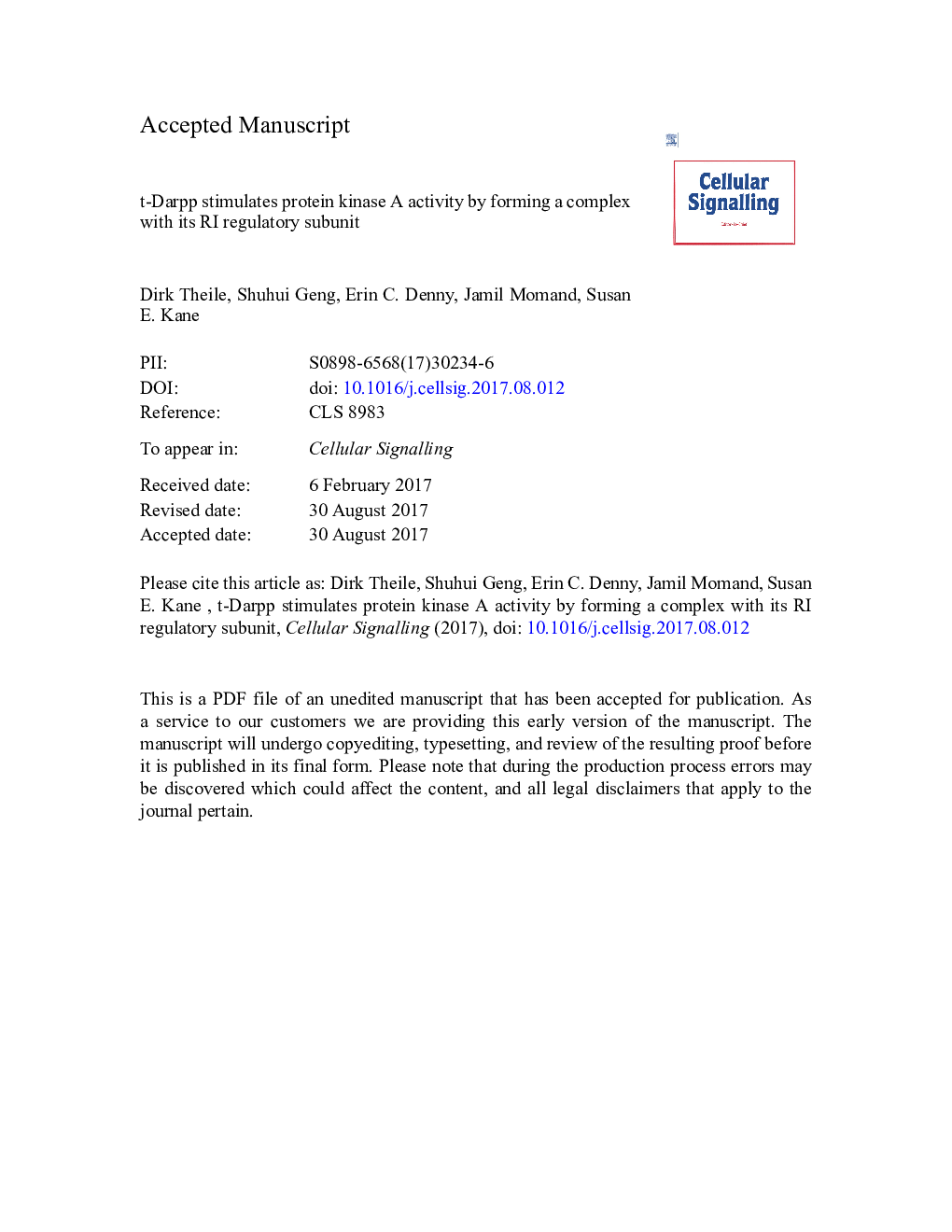| کد مقاله | کد نشریه | سال انتشار | مقاله انگلیسی | نسخه تمام متن |
|---|---|---|---|---|
| 5509259 | 1538504 | 2017 | 38 صفحه PDF | دانلود رایگان |
عنوان انگلیسی مقاله ISI
t-Darpp stimulates protein kinase A activity by forming a complex with its RI regulatory subunit
دانلود مقاله + سفارش ترجمه
دانلود مقاله ISI انگلیسی
رایگان برای ایرانیان
کلمات کلیدی
موضوعات مرتبط
علوم زیستی و بیوفناوری
بیوشیمی، ژنتیک و زیست شناسی مولکولی
زیست شیمی
پیش نمایش صفحه اول مقاله

چکیده انگلیسی
t-Darpp is the truncated form of the dopamine- and cAMP-regulated phosphoprotein of 32Â kDa (Darpp-32) and has been demonstrated to confer resistance to trastuzumab, a Her2-targeted anticancer agent, via sustained signaling through the phosphatidylinositol-4,5-bisphosphate 3-kinase (PI3K)/Akt pathway and activation of protein kinase A (PKA). The mechanism of t-Darpp-mediated PKA activation is poorly understood. In the PKA holoenzyme, when the catalytic subunits are bound to regulatory subunits RI or RII, kinase activity is inhibited. We investigated PKA activity and holoenzyme composition in cell lines overexpressing t-Darpp (SK.tDp) or a T39A phosphorylation mutant (SK.tDpT39A), as well as an empty vector control cell line (SK.empty). We also evaluated protein-protein interactions between t-Darpp and PKA catalytic (PKAc) or regulatory subunits RI and RII in those cell lines. SK.tDp cells had elevated PKA activity and showed diminished association of RI with PKAc, whereas SK.tDpT39A cells did not have these properties. Moreover, wild type t-Darpp associates with RI. Concurrent expression of Darpp-32 reversed t-Darrp's effects on PKA holoenzyme state, consistent with earlier observations that Darpp-32 reverses t-Darpp's activation of PKA. Together, t-Darpp phosphorylation at T39 seems to be crucial for t-Darpp-mediated PKA activation and this activation appears to occur through an association with RI and sequestering of RI away from PKAc. The t-Darpp-RI interaction could be a druggable target to reduce PKA activity in drug-resistant cancer.
ناشر
Database: Elsevier - ScienceDirect (ساینس دایرکت)
Journal: Cellular Signalling - Volume 40, December 2017, Pages 53-61
Journal: Cellular Signalling - Volume 40, December 2017, Pages 53-61
نویسندگان
Dirk Theile, Shuhui Geng, Erin C. Denny, Jamil Momand, Susan E. Kane,